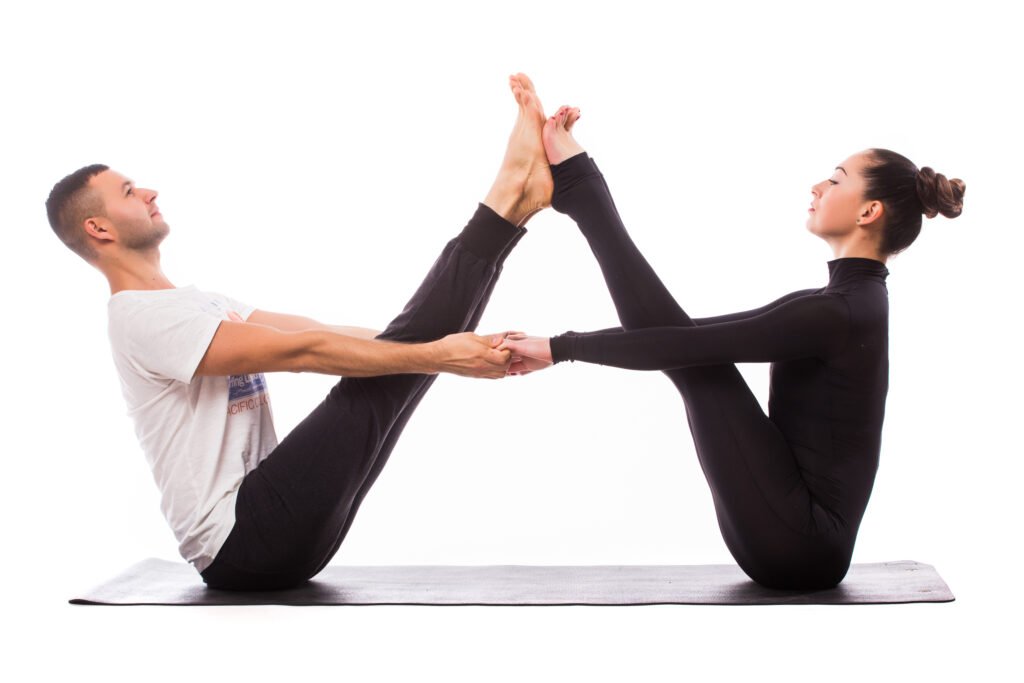Yoga has long been hailed as a practice that enhances physical, mental, and emotional well-being. While many people practice yoga individually, partnering up can add dimension to your practice, fostering deeper connections and enhanced physical benefits. In this blog post, we delve into “2 Person Yoga Poses: Building Trust and Balance Together,” exploring various poses, their benefits, and tips on how to incorporate them into your routine. This focus will help you and your partner build trust, balance, and harmony in your practice.
The Power of 2 Person Yoga
Practicing yoga with a partner is not only about physical exercises but also about building a connection. The synchronization required in 2 person yoga poses can foster trust and communication between partners. It challenges both individuals to be aware of their own bodies and their partner’s, creating a harmony unlike any other physical activity.
Benefits of 2 Person Yoga Poses
1. Enhances Communication and Trust: Successful execution of these poses relies on verbal and non-verbal communication. Partners learn to communicate better, leading to stronger trust and rapport. 2. Improves Physical Strength and Flexibility: Many 2 person yoga poses push your body in new ways, enhancing strength and flexibility that might not be achieved through solo practice. 3. Promotes Balance and Coordination: Balance is a key component in these poses. Practicing together hones your balancing skills and improves overall coordination. 4. Deepens Connections: Whether you’re practicing with a friend, family member, or significant other, these poses create shared experiences that deepen bonds.
Key 2 Person Yoga Poses
1. Double Downward Dog
This pose is a great starting point for beginners. In double downward dog, one person assumes the traditional downward dog position while the other stands facing away from their partner’s feet. The second person then leans down, placing their hands near the first person’s hands and feet on the lower back.
Steps:
- Partner A gets into a downward-facing dog position.
- Partner B stands facing away from Partner A’s feet, placing their hands on the ground in line with Partner A’s hands.
- Partner B carefully places their feet onto Partner A’s lower back.
Benefits:
- Stretches the hamstrings, calves, and spine.
- Strengthens the arms and shoulders.
- Enhances overall body coordination.
2. Partner Forward Fold
This pose is excellent for stretching the hamstrings and lower back. Partners face each other, about a leg’s distance apart, holding each other’s wrists, and gently pulling back to deepen the stretch.
Steps:
- Both partners stand facing each other with feet hip-width apart, holding each other’s wrists.
- Both partners step back and bend forward at the hips, keeping the back straight.
- Gently pull each other’s arms to increase the stretch.
Benefits:
- Stretches the hamstrings and lower back.
- Encourages trust and communication.
3. Buddy Boat Pose
 Boat pose strengthens the core and can be intensified when done with a partner. Partners sit facing each other with knees bent and toes touching. They hold hands and lift their legs to form a ‘V’ shape with their bodies.
Boat pose strengthens the core and can be intensified when done with a partner. Partners sit facing each other with knees bent and toes touching. They hold hands and lift their legs to form a ‘V’ shape with their bodies.
Steps:
- Sit facing your partner with knees bent and toes touching.
- Hold each other’s hands or wrists.
- Lift your legs to form a ‘V’ shape with your body, balancing on your sit bones.
Benefits:
- Strengthens the core muscles.
- Enhances balance and coordination.
- Promotes teamwork.
4. Back-to-Back Chair Pose
In this pose, partners stand back-to-back and lower into a chair pose, supporting each other’s backs. This pose strengthens the legs and enhances trust as you rely on your partner’s support to maintain balance.
Steps:
- Stand back-to-back with your partner.
- Slowly lower yourself into a squatting position, ensuring your thighs are parallel to the ground.
- Use each other’s backs for support.
Benefits:
- Strengthens the thighs, hamstrings, and glutes.
- Improves balance and trust.
- Encourages synchronization with your partner.
5. Double Plank
This dynamic and challenging pose involves one partner in the traditional plank position, serving as the base, while the second partner places their hands on the first partner’s ankles and aligns in a plank above.
Steps:
- Partner A gets into a plank position on the mat.
- Partner B stands behind Partner A’s feet and places their hands on Partner A’s ankles.
- Partner B walks their feet back and aligns their body into a plank above Partner A.
Benefits:
- Enhances core strength and stability.
- Strengthens the upper body.
- Requires and fosters intense trust and coordination.
Tips for Practicing 2 Person Yoga Poses
1. Communicate Clearly: Clear and constant communication is key when practicing 2 person yoga poses. Always inform your partner about how you feel and any discomfort experienced. It’s essential to synchronize breathing and movements, ensuring a smooth and coordinated practice.
2. Warm Up Together: Before delving into 2 person yoga poses, perform a warm-up session together. This prepares your muscles and joints, reducing the risk of injury and enhancing flexibility. A few minutes of gentle stretching or light cardio can make a significant difference.
3. Maintain Focus and Patience: Practicing yoga with a partner requires focus and patience. It’s important to remain mindful of each other’s movements, maintaining the flow and harmony. Be patient with yourselves, especially when learning new poses; it takes time to perfect the coordination.
4. Respect Each Other’s Limits: Understand and respect each other’s physical limits. Never force your partner into a position they’re uncomfortable with, as this can lead to injury and strain the relationship. Instead, support each other and encourage gradual progression.
5. Practice Safety and Support: Always prioritize safety in your practice. Using mats, practicing on a soft surface, and being attentive to each other’s body language can prevent injuries. Support your partner physically and emotionally, creating a safe and supportive environment.
6. Include Relaxation and Breathing Exercises: Incorporate relaxation techniques and breathing exercises to conclude your session. This helps in winding down and enhancing the overall experience. Techniques such as synchronizing breaths and performing joint meditation can deepen your connection.
Incorporating 2 Person Yoga Poses into Your Routine
Integrating 2 person yoga poses into your regular practice can be incredibly rewarding. Start by setting specific times during the week dedicated to partner yoga. Consistency is key to reaping the full benefits of this engaging practice.
You can also blend solo and partner yoga to create a well-rounded routine. Begin your session with individual poses and transitions into partner poses. This approach allows you to warm up individually while enjoying the collaborative and challenging nature of 2 person yoga poses.
Conclusion
“2 Person Yoga Poses: Building Trust and Balance Together” offers a unique and engaging way to enhance both physical fitness and interpersonal connections. These poses not only improve strength, flexibility, and balance but also foster trust, communication, and emotional bonds between partners. By incorporating these poses into your yoga routine, you create opportunities to deepen relationships and enhance overall well-being.
Remember, the journey of yoga is continuous, and partnering up brings an added dimension of support and camaraderie. Embrace the journey with your partner, build trust, and achieve balance together through the beautiful practice of 2 person yoga poses.
In summary, practicing 2 person yoga is an enriching activity that intertwines physical exercise with emotional and relational growth. It encourages mutual understanding and cooperation, essential components in nurturing personal and shared growth. So, roll out your mats, invite a partner, and embark on this enlightening journey together.
By practicing these 2 person yoga poses, you not only enhance your physical health but also create lasting memories and strengthen the connections you have with your practice partner. Experience the profound benefits of synchronized movements, mutual support, and shared growth, all wrapped in the harmonious practice of yoga.







[…] by concentrating on your inner feelings and engaging in mindful movement. Including somatic yoga in your routine may change both your practice and your life, regardless of your level of […]